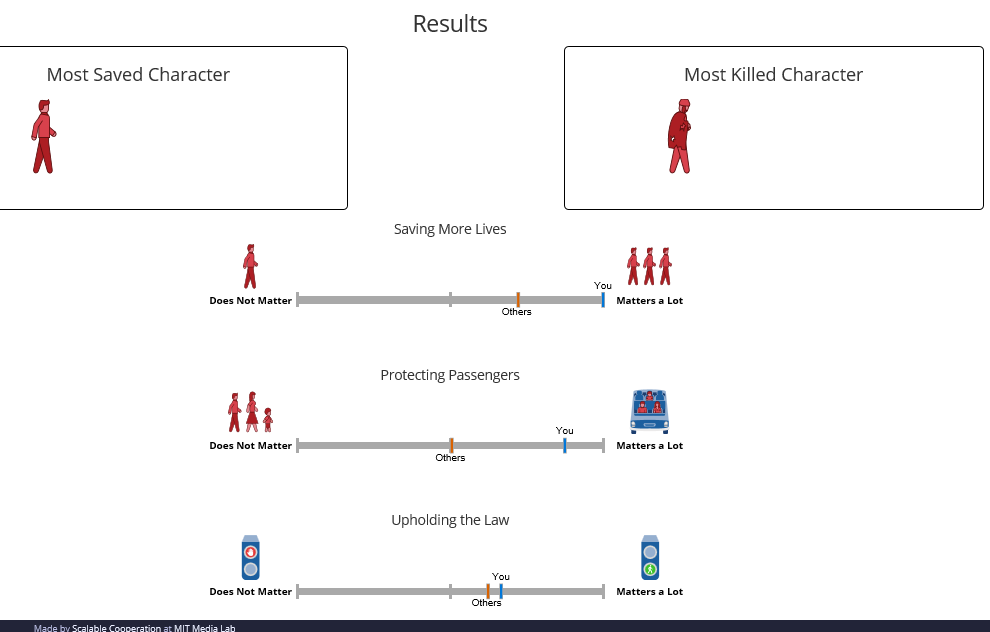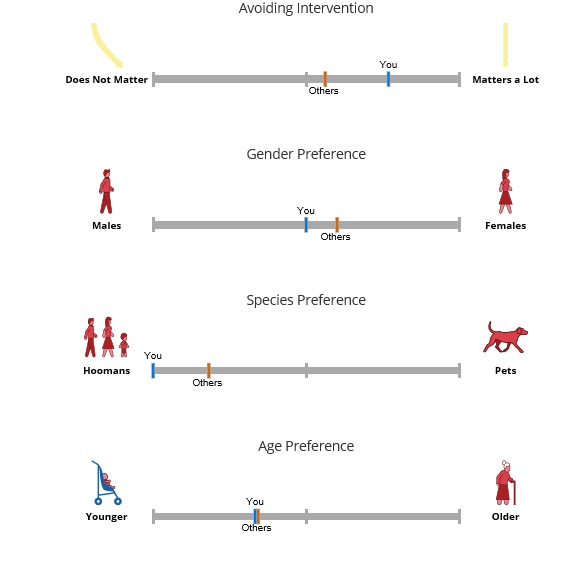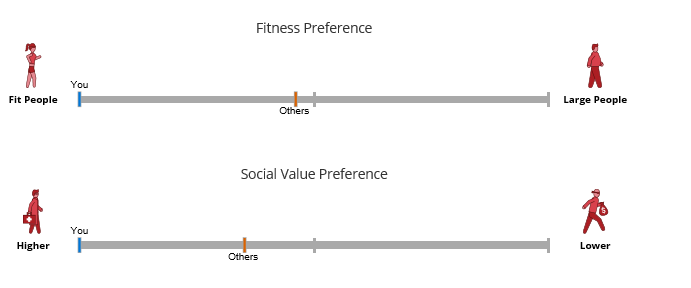http://moralmachine.mit.edu/
Here's mine:










Yeah, I've noticed that now. Using screenshots is the only way it seems, but who doesn't use screenshots?Dog wrote:Can't load up the links. When it loads the results' ID is reoved and there's nothing left but a blank page.








I had the same result. This test doesn't have much variance.SPACEpotato1 wrote:

This may actually be the case, I played around with the test and got very different results. This seems to be because the test randomly picks different scenarios which could make things seem totally one-sided depending on your decision.Biolock wrote:I think this is a flawed test, tried to post my results, but it didn't work for some reason.
Here are my reasons; you can choose various answers for various reasons. My rules when playing this game were: Humans > Animals; Young People > Old people; Pedestrians > Passengers (This one I was iffy on, but I made this decision non-the less); More people > Less people; Criminals have a slight value subtraction in this game.
I feel like many people would agree (At least mostly) with my grading scale, yet the game sometimes forces you to make decisions that, because of the options available, make it seem as though you value overweight people, or women more; which was simply not the case, in this sense, for me, it was purely a numbers game.